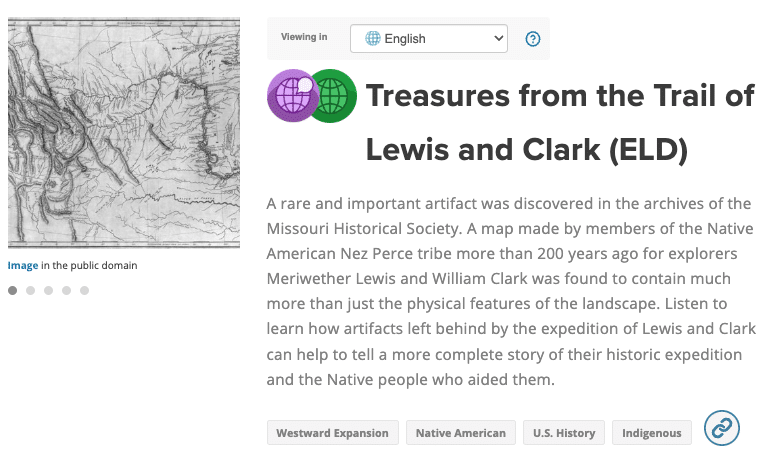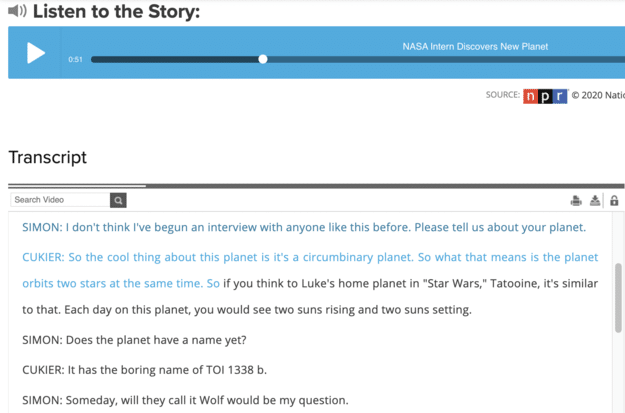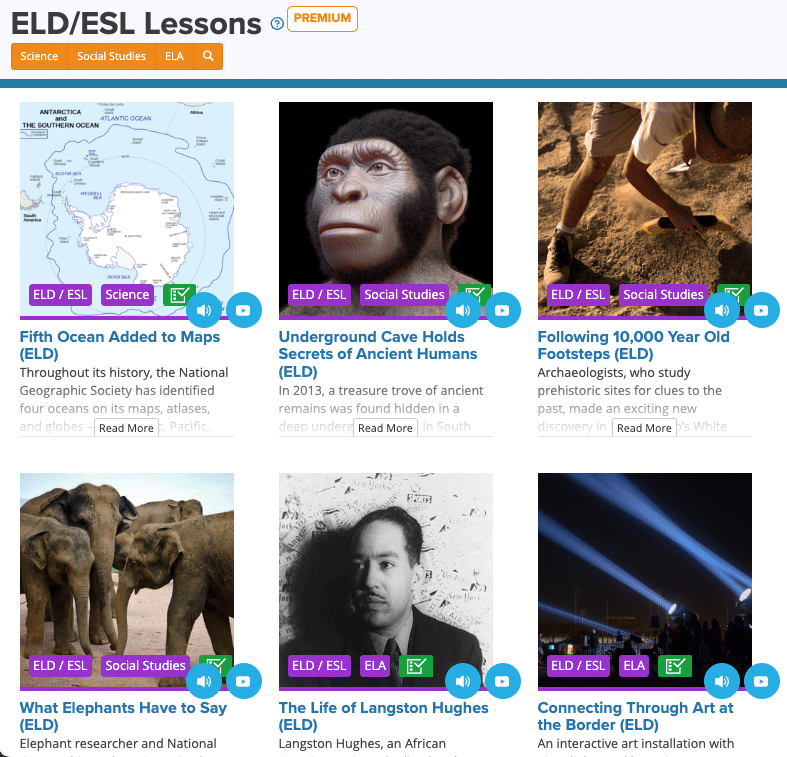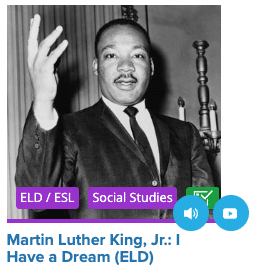Last Updated on October 8, 2025
Students at all levels of English language proficiency need opportunities to practice speaking and listening skills in the classroom. Activities that invite students to talk with each other about what they are learning build essential language skills while also increasing student engagement.
In this blog post, we’re going to walk you through the rationale for building speaking and listening skills practice time into your weekly classroom routine, as well as share tips for how to do it.
We hope this will make developing your English learners’ speaking and listening skills easier and more effective than ever!
As of August 2024, Listenwise has a new product designed for newcomers and emergent multilinguals in grades 2-12. Lingolift helps students develop English language proficiency across all four language domains: listening, speaking, reading, and writing. Take a product tour to learn more about Lingolift.
How Speaking and Listening Skills Go Together
Speaking skills are a foundational component of language learning represented in frameworks such as the Common Core State Standards for English Language Arts, the WIDA 2020 Standards Framework, and the California English Development Standards.
There are many opportunities to practice speaking built into Listenwise ELD lessons. Our standards-aligned lessons feature short, engaging, relevant podcasts that include a diversity of voices using academic language in the context of authentic speech. Supports include videos, interactive transcripts, listening organizers, comprehension and discussion questions, embedded dictionaries, and translations.
Tips for Scaffolding Speaking Activities
Here are some tips for structuring speaking practice activities to support English language learners:
Use images and words together – Pair photos or other images with words or phrases to provide visual information that helps students comprehend and remember vocabulary. Offer beginning English learners multiple options from which to choose, along with consistent response frames, to ease the burden of responding orally.
Provide sentence stems – Offer students sentence starters, requiring them to fill in a few words or a phrase rather than constructing a complete sentence. This lowers the lift of speaking, while also modeling grammar structures and other speech patterns that students can learn to use independently.
Invite students periodically to turn and talk – Ask students to discuss their ideas or responses with another student before sharing with the larger group. This lowers the stakes and offers learners a chance to work out their thoughts one-on-one in dialogue. It can be helpful to pair beginners with students at higher levels of language proficiency.
Practice Speaking and Listening Skills with Listenwise Lessons
Teacher guidance for each lesson recommends instructional activities before, during, and after listening to a short podcast and provides ideas for differentiating instruction to support students at varying levels of English proficiency.
 Before Listening
Before Listening
Ask students what they know about a topic before an audio story is introduced. Depending on their proficiency levels, students may need sentence stems, they may answer simple questions with a word or phrase, or they may respond in simple sentences.
For example, before listening to Treasures from the Trail of Lewis and Clark (ELD), students might be asked to share what they know about Lewis and Clark to activate prior knowledge and build background knowledge. They might be asked to describe what they see in the map or in the other images that accompany the lesson.
Invite students to talk about the meaning of new vocabulary words, practice pronouncing them, brainstorm examples, discuss how they relate to other words, and/or use them orally in a sentence. In the Lewis and Clark lesson, for instance, students might brainstorm examples of “artifacts” from the classroom and explain what “clues” they might provide about life in school.
During Listening
Listenwise ELD lessons include three close listens, each with a different focus. Each time a podcast is played, teachers can pause the recording periodically and ask students to respond to a short audio segment by answering a question to check for comprehension, repeating or summarizing what they heard, or asking a question of their own.
It can be helpful to pause and replay a sentence containing a key vocabulary word in the context of authentic language and ask students to repeat or paraphrase the sentence. Interactive listening is a great way to engage students in both interpreting and producing academic language.
When playing the story Teen Discovers New Planet (ELD), teachers might stop and replay the sentences in which a high school student explains “the cool thing” about the planet he discovered, and students can discuss what it means for a planet to orbit two stars at the same time, compare that to earth’s orbit, etc.
After Listening
Each Listenwise lesson includes customizable listening comprehension and discussion questions, which offer excellent opportunities to practice speaking. Teachers’ guides in the ELD Lesson Library include one of three familiar protocols for structuring academic conversation.
Think-Pair-Share
Use a think-pair-share protocol with students working together to answer the comprehension questions and share answers as a class. For beginning English learners, you may want to provide sentence stems or pictorial support for each of the comprehension questions. Ask students to think about answers to each of the questions individually by writing notes or drawing pictures, then ask pairs of students to work together to write answers to comprehension questions, and finally ask pairs of students to share their answers with the class.
Getting the Gist
Use a gist protocol with students working together to identify the gist or main idea of the story. Ask students to work in pairs to answer the listening comprehension questions. Discuss answers as a class. Next, ask students to work together to answer the following questions, providing scaffolds as needed:
- What is the subject of the story? Who or what is the story about?
- What is the most important thing that the story says about the subject?
- What is the gist of the story (subject + what the story says about it)?
Ask pairs of students to share their gist statements, and work to get consensus on a final version that works well as a statement of the main idea of the story.
Chalk Talk Gallery Walk
Use a chalk talk gallery walk protocol with students responding to open-ended questions that elicit a variety of responses, such as the discussion questions provided in each lesson. Students collaborate by silently adding their thoughts about each question to a shared document (e.g., chart paper or a whiteboard) using words, symbols, pictures, or any other form of written expression. After students have had a chance to circulate and contribute their ideas, discuss responses as a class, asking students to orally summarize what they notice, build on each other’s ideas, or otherwise engage orally with what they produced silently on the shared documents.
Speaking Assessments
Speaking can be recorded for assessment purposes after a Listenwise lesson. ELD lessons include language objectives which can be used as a speaking prompt. Using a speaking app allows students to record their individual responses whenever they are ready and teachers can listen to them at any time.
Here are some apps to use for speaking assessments:
For more ideas about integrating speaking activities into ELD lessons, check out our blog post on Planned Speaking Practice and our webinar with Jeff Zwiers of the Understanding Language initiative at the Stanford Graduate School of Education.




